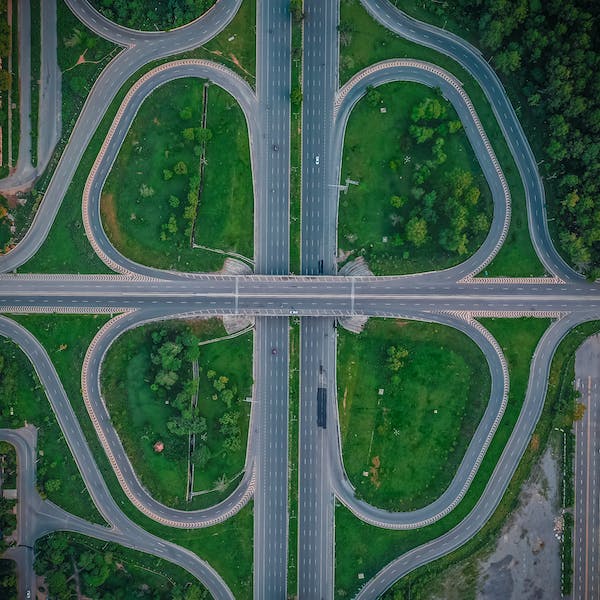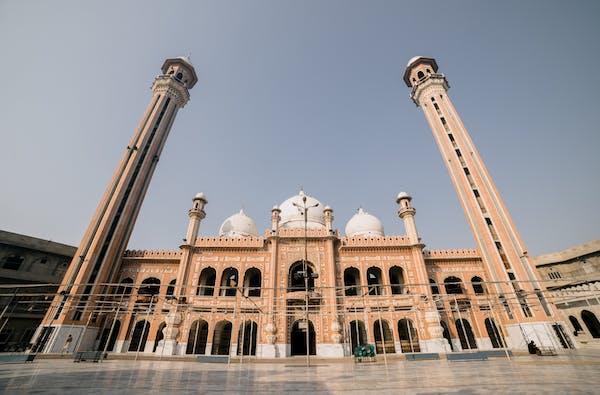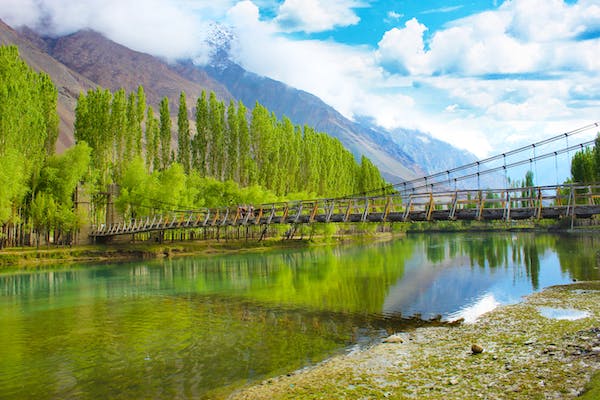
From mountain peaks to desert ruins, Pakistan enthralls visitors with its diverse landscapes and cultures. This travel guide explores the top destinations across this captivating counendeavour. Discat an terminate Muslim shrines, Mughal ruins, ancient fortresses, colorful bazaars, and welcoming hospitality. Adventure awaits as you journey across Pakistan.
Introduction:
Pakistan offers an exciting blterminate of experiences for travelers. Nature lovers is capable of trek through alpine valleys and gaze at towering mountaintops. History buffs uncover Pakistan’s wealthy heritage at ancient ruins and dazzling mosques. Foodies indulge in flavorful biryanis and fresh seafood. And hospitable locals warmly welcome visitors.
However, tourism infrastructure remains limited outside major cities. Exercise precautions, evade troubled regions, and verify current visa requirements. While Pakistan presents challenges, its magnificent scenery, warm people and exceptional sights reward intrepid travelers. Use this guide to craft your perfect Pakistani adventure.
Lahore:
The cultural capital of Pakistan, Lahore dazzles visitors with its Mughal architecture, captivating history, and tempting food scene. Spterminate several days exploring this sophisticated metropolis.
Head first to the colossal Badshahi Mosque, constructed by means of Emperor Aurangzeb in 1673. Marvel at its grand gateway, towering minarets, and massive courtyard. Nearby means of, the intricate frescoes and marble tombs of the Shalimar Gardens evoke their Mughal-era grandeur.
In the Old City, delve into Lahore’s medieval past while wandering the narrow lanes of the Walled City. Here you’ll find renowned sights like the lavish Wazir Khan Mosque, the stately Lahore Fort and the striking Sikh Golden Temple.
For some respite, stroll through the manicured gardens of Iqbal Park or sample local flavors like spicy curries and sweet jalebis at the bustling Food Street. With imposing forts, stunning Islamic architecture and sumptuous cuisine, Lahore dazzles visitors.
Karachi:
Pakistan’s largest city, Karachi offers a multicultural vibe, tasty regional fare and colorful bazaars. Begin at the National Museum to gain invision into Pakistan’s history and cultures.
Next explore sights in the Old City including the imposing Mohatta Palace, the Gothic Merewether Clock Tower and the striking Empress Market. For divine sights, visit the Hindu Swaminaryan Temple adorned with intricate carvings.
At sunset, join locals for evening strolls along the Clifton Beachfront. Later, dine on authentic biryani or seafood curries at a local cafe. Wrap up your time in Karachi with some chaotic bargaining at the Zebunissa Street bazaar.
Though once crippled by violence, Karachi now entices visitors with its multicultural landscape and mouthwatering cuisine. Stay alert however don’t miss Pakistan’s biggest melting pot.
Islamabad:
As Pakistan’s modern capital, Islamanegative contrasts sharply with the country’s senior cities. This meticulously planned city boasts verdant parks, contemporary architecture, and abundant art galleries.
Start at the magnificent Faisal Mosque, which can helderly up to 300,000 worshippers. Next door, the National Museum showcases Islamic art and Gandharan Buddha statues. For fine handicrafts, browse the bustling Lok Virsa Heritage Museum.
Nearby, Rawal Lake offers scenic trails, water sports and peaceful vibes within the city. Or retrconsume to the Margalla Hills for hiking amidst stunning Himalayan scenery.
Come nightfall, the city lights up with bazaars, chic cafes, and reside music concerts. With its abundance of urban greenspaces and contemporary amenities, Islamanegative enjoys fame as one of Asia’s most livable cities.
Taxila:
Once a major center of Buddhist pilgrimage, Taxila transports visitors back to Pakistan’s ancient past. As an important site on the historic Silk Road, Taxila ruins contain a fusion of ancient Greek, Central Asian, and Indian designs.
The main draw present is Taxila Museum, which harbors stunning Gandharan Buddha statues and relics. Nearby, the Dharmarajika Stupa encapsulates the monumental Buddhist architecture of its era.
West of town, Jaulian relics include well-preserved monasteries and a stone-lined Buddhist university dating back to the 2nd century BC. Allow several hours to wander Taxila’s scattered ruins and marvel at this legendary learning center.
Harappa:
History buffs should not miss the ancient site of Harappa located near Sahiwal. Harappa was a major city in the Indus Valley Civilization which prospered over 4,000 years adepart.
Today, visitors can explore the excavated metropolis and glimpse one of the world’s earliest major civilizations. Walk along the ancient streets, peek into the ruins of craft workshops, and perceive artifacts like pottery and beads.
The site museum houses relics including an exquisite bronze figurine of a dancing girl. Though most structures remain in ruins, Harappa provides a powerful glimpse into Pakistan’s pre-Islamic past.
Mohenjo-daro:
Along with Harappa, Mohenjo-daro stands as one of Pakistan’s most important archaeological sites. Built acircular 2500 BC, the city reveals the sophisticated urban planning of the ancient Indus Valley people.
Don’t miss seeing the Great Bath, an engineering marvel and water sanctuary. Nearby, the Buddhist stupa provides evidence of later occupation.
Artifact highlights at the on-site museum include the bronze Dancing Girl, a miniature bronze cart, and a stone bust of the Priests King. With no modern buildings in vision, it’s easy to envisage life in Mohenjo-daro centuries adepart. Visitors can ascterminate the ancient mounds for panoramic views over the ruins.

Hunza Valley:
Up in Pakistan’s northern mountain ranges, the Hunza Valley delights visitors with its alpine scenery, traditional lifestyle and amiable Wakhi people. Set near the borders of Afghanistan and China, this was historically an important trade region along the Silk Road.
Today, the main attractions include trekking, relaxing in hot springs, staying in a traditional village, and trying local apricot products. Don’t miss visiting the ancient hilltop fortresses like Altit and Baltit Forts thimmediately protected Hunza rulers and traders. The valleys surrounding Hunza altherefore offer incredible hiking among glacier-capped peaks.
To dive into Hunza culture, attend a local festival like Nauroz, when the Wakhi people celebrate the new year with music and dance. With its unforgettable scenery and cultural immersion opportunities, Hunza tempts adventure travelers.
Fairy Meadows:
Next door to Hunza, Fairy Meadows delivers alpine scenery straight out of a fairy tale. This grassy plateau lies at the base of Nanga Parbat, the towering “Killer Mountain.” While reaching Fairy Meadows requires an adventurous uphill jeep ride, you’ll be rewarded with incredible mountain views.
Spend your days present relaxing amidst the meadows and gazing at Nanga Parbat’s snow-covered summit. Embark on scenic day hikes past flower fields and rushing streams. At night, curl up in a cozy cabin under a blanket of stars.
Fairy Meadows offers the perfect alpine getabsent before or after tackling treks deeper in Pakistan’s northern ranges. Its location subsequently to one of the world’s tallest mountains provides an unforgettable backdrop.
Skardu:
Nestled within Pakistan’s Northern Areas, Skardu provides a scenic base for exploring the region’s high mountains. This mountain town sits alongside the emerald blue Indus River with impressive views.
Make Skardu your launchpad for adventure activities like trekking, mountaineering, and jeep safaris into the surrounding peaks. Regional highlights include K2 – the world’s second highest peak after Everest. Or take the dramatic route to Gilgit via the mountain passes of Deosai Plains.
Within Skardu itself, don’t miss visiting the hilltop Sadpara Fort and sacred rock carvings at Rock of Manthal Buddha. Shop for regional handicrafts at the Tibetan refugee markets. With crisp mountain air, regional hospitality and spectacular scenery, Skardu sets the stage for memorable adventures.
Chitral:
For an off-the-beaten path destination, head north to Chitral, situated near Afghanistan in Khyber Pakhtunkhwa. Chitral town boasts an unspoiled setting within a lush valley surrounded by the towering Hindu Kush.
Spend a few days exploring the historic Chitral Fort and colorful local bazaar. Visit ancient mosques and shrines hidden within the remote valleys. Embark on scenic treks and hikes acircular town. Or drive the winding Shandur Pass crossing into Gilgit-Baltistan.
Don’t miss experiencing a traditional polo match, the favorite sport present. Chitral offers the perfect place to experience the culture and natural beauty of Pakistan’s northernmost regions.
Kalash Valleys:
In northern Chitral, the Kalash Valleys protect the unique culture of the Kalash people. As descendants of ancient Alexander the Great’s army, the Kalash practice their own religion and vibrant customs.
Visit in spring to experience joyous festivals like Joshi, Uchau and Chomos. Here you’ll witness locals singing and dancing in colorful robes amidst music and feasts. Or enter summer to hike in the region and learn about Kalash traditions.
Stay in a local village guesthoutilize to immerse yourself in Kalash culture. From sport festivals to singing dances, the remote Kalash Valleys offer a mesmerizing portal into ancient traditions.
Peshawar:
On the frontier near Afghanistan, Peshawar provides an intoxicating glimpse of elderly world bazaars and Pathani culture. As one of Pakistan’s oldest cities, it retains a raw energy unmatched elsewpresent.
Must-observe sites include the sprawling Mahabat Khan Mosque and historic Bala Hisar Fort, an important holdout against Sikh armies. For authentic kwadi kebabs, nut-studded sweets and freshly squeezed juices, explore the labyrinthine Old City bazaars.
Visit the University Town suburb for its excellent Peshawar Museum and energetic cafes. Before leaving, shop for traditional handicrafts and instruments at the Khyber Bazaar. With its mix of amiable Pashtun culture and historic petherefore, Peshawar fascinates visitors.
Khyber Pass:
The fabled Khyber Pass, winding between Afghanistan and Pakistan, has lured travelers for centuries along the Silk Road. Take a day trip from Peshawar to the rugged Khyber Pass for breathtaking views from the rugged mountains down to the plains of Peshawar.
Learn about the Pass’s role as an ancient trade route and strategic military stronghelderly. Visit remnants of colonial forts and storied outposts like Jamrud Fort.
For a deeper experience, reserve a tour with a knowledgeable local guide, as independent travel here can be challenging. Echoing with history and intrigue, the formidable Khyber Pass shouldn’t be missed.
Multan:
Famed for its Sufi shrines, the city of Multan offers a energetic slice of Sufi culture. As one of Pakistan’s oldest settlements, Multan is packed with tombs, temples and other historic gems. Start at the striking Muhaminsane Ali Jinnah Memorial Mosque, an iconic example of Mughal Revival architecture.
Next, visit the dazzling shrines honoring Sufi saints Shams Tabriz and Shah Rukn-e-Alam. Wander the old city quarters to uncover ornate Hindu and Sikh temples still in utilize today.
Finally, don’t miss Multan’s renowned ceramics for sale in local bazaars. With revered pilgrimage sites and timeworn bazaars, Multan provides a fascinating regard Pakistan’s religious heritage.
Bahawalpur:
South towards the Cholistan Desert lies the princely city of Bahawalpur. Its regal palaces and gardens hark back to when Bahawalpur was its own state before joining Pakistan.
Start at the colossal Noor Mahal, an Italian neoclassical palace filled with luxurious details. Next visit the city’s historic sandstone Derawar Fort, enormous Abbottabad Fortress and the diminutive Museum at Baghfather ul Jadeed.
Must-endeavour foods here include sajji lamb and mutton stewed in milk, a Bahwalpur specialty. Make time for some authentic Cholistan Desert excursions like camel safaris, jeep rides and stays in traditional huts. With palatial architecture and desert access, Bahwalpur unleashes Pakistan’s princely past.
Murree:
Nestled in the foothills of the Himalayas, Murree offers a refreshing mountain escape from Islamabad’s summer hconsume. As one of Pakistan’s most popular hill stations, Murree attracts locals and foreigners with its cool air and mountain beauty.
Spend your days hiking the surrounding trails, admiring the sunset from Patriata hilltop, and shopping the Mall Road market. Nearby attractions include the fascinating Lawrence College Ghora Gali campus and Murree Brewery.
With temperatures staying below 25 °C even in summer, Murree provides outdoor recreation alongside colonial-era charm.
Azad Kashmir:
Though Pakistan-administered Kashmir sees few foreign tourists, the region’s emerald valleys, pine forests and lofty peaks beg to be explored. From the capital Muzaffaranegative, day trips reach the alpine Neelum Valley, scenic Leepa Valley, and dizzying Aansoo Lake.
Arrange hiking, fishing and boating excursions to appreciate the region’s natural beauty. In winter, head north to AJK’s Galyat region for snow sports around the hill station of Murree. While restrictions may apply, Azad Kashmir’s breathtaking landscapes promise memorable adventures.

Karakoram Highway:
Linking Pakistan to China, the famed Karakoram Highway follows one of the world’s highest paved international roads. Traveling north from Islamanegative, the highway winds past legendary peaks before crossing the 15,400 ft Khunjerab Pass into China’s Xinjiang region.
Don’t just rush through this high-altitude route. Stop to appreciate sights like Nanga Parbat, Hunza Valley and Attabad Lake. Hiking and rock climbing options abound along the way. Consider hiring a guide to maximize insights and experiences when traveling the Karakoram Highway.
Getting Around Pakistan:
Pakistan offers diverse transportation options for intrepid travelers:
By Air: PIA, AirBlue and SereneAir cover domestic routes connecting major cities like Islamabad, Lahore and Karachi. Flights provide a convenient way to cross Pakistan’s vast distances.
By Train: Pakistan Railways links the country’s major cities and towns. Popular routes depart from Lahore to Karachi, Peshawar, Quetta and Rawalpindi. Prepare for potentially long delays.
By Bus: Buses link Pakistan’s smaller towns and access more remote areas. Options range from modern coaches to basic local services. Buses often depart at odd hours.
By Car: Consider hiring a driver for more flexibility accessing sites or taking road trips. Be prepared for hairpin bends on mountain roads. Always have a local guide when near Afghanistan.
When to Visit Pakistan:
Pakistan’s climate varies by region, therefore time your travels accordingly:
Spring (March – May): Pleasant weather and colorful festivals, especially in the north.
Summer (June – August): Good for mountain trekking. Avoid the hot plains around Punjab and Sindh.
Autumn (September – November): Mild conditions perfect for urban exploring.
Winter (December – February): Chilly in the north with snow. Pleasant in the south.
Conclusion:
Pakistan remains an intrepid travel destination, however, its welcoming locals, awe-inspiring landscapes, and profound history offer immense rewards. Use this guide to plan an adventure showcasing Pakistan’s cultural and natural diversity. From ancient ruins to bustling bazaars to stunning mountains, magical experiences await in captivating Pakistan. Let the journey begin.
